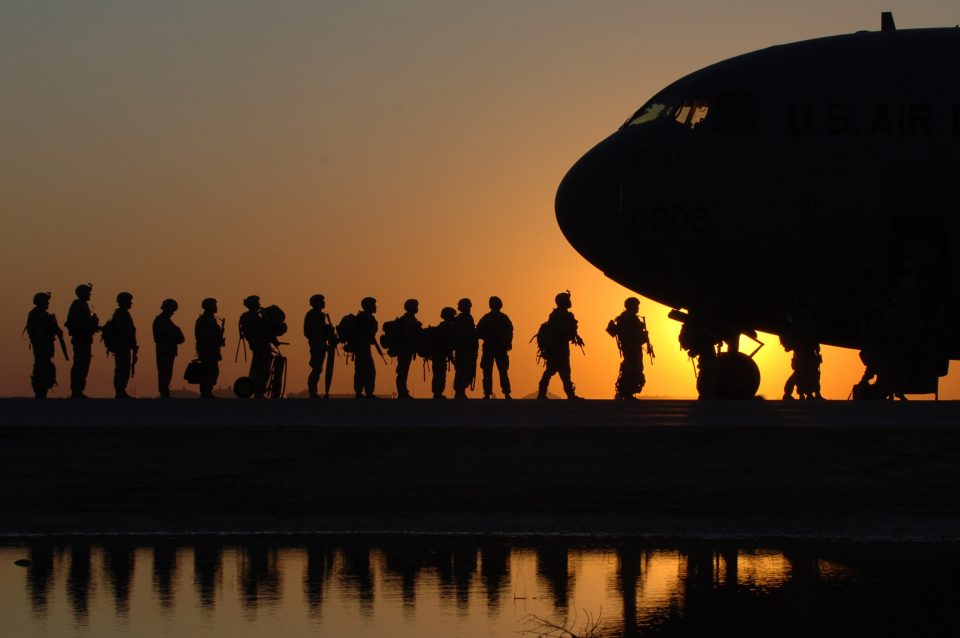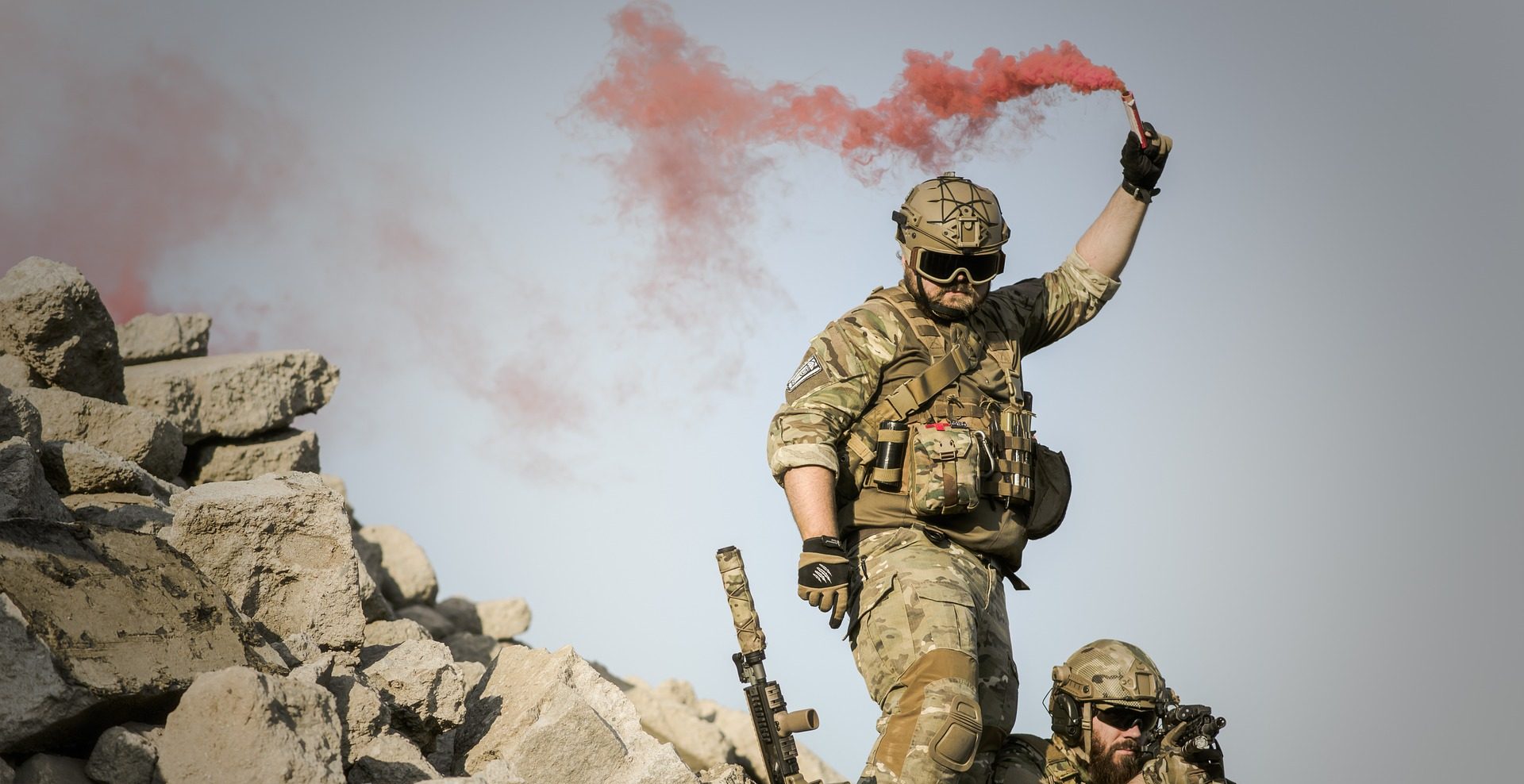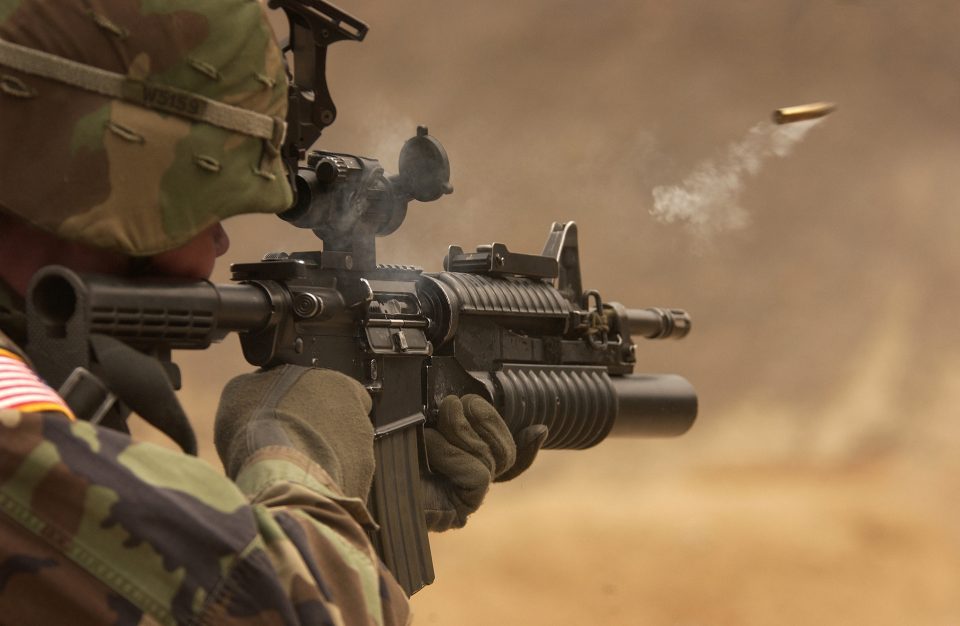- TCCC (Tactical combat casualty care) outlines the priorities of care for casualties in combat applications
- Nearly 90% of combat fatalities occur before reaching a medical treatment facility
- Prehospital phase is the focus of efforts to reduce deaths in combat
- TCCC Working Group includes trauma surgeons, EM physicians, internists, family physicians, physician assistants, combat medical educators, trauma researchers, pathologists, combat medical doctrine developers, medical equipment specialists, combat medics, corpsmen, and PJs
- This group has taken the TCCC guidelines as they existed in 2001 and continually updated them throughout 15 years of war based on developments in both civilian and military theatres
- TCCC offers guidelines for a range of combat personnel – from recommendations for all combatants to combat paramedics and SOF medics
For other topics related to Military Medicine, please see our posts on Recent Updates to TCCC, Damage Control Resuscitation, Prolonged Field Care, Blast Injuries, Inhalation Injuries, Abdominal Stab Wounds, and Emergency Resuscitative Thoracotomy.
TCCC is divided into 3 phases
- Care under fire
- Tactical field care
- Tactical evacuation care
Care under fire
This initial stage is unique to military and law enforcement applications compared to civilian pre-hospital scenarios. The focus here remains on gaining fire superiority and minimizing further injury to the casualty and other team members. As the opposing force is suppressed, casualties can be moved to safer locations. The only medical intervention attempted during this phase is early application of tourniquets to halt life-threatening hemorrhage, and only if tactically feasible.
- Return fire and take cover
- Prevent further injuries to casualty – direct the casualty to:
- Remain engaged as combatant, or
- Move to cover / apply self-aid
- If tactically feasible:
- Stop life-threatening external hemorrhage (or direct self-aid)
- i.e. apply limb tourniquet “high and tight” for extremity hemorrhage
- Life-threatening bleeding:
- Spurting / flowing blood
- Blood rapidly soaking uniform or pooling on ground
- Complete amputation
- Move the casualty to cover
- Fastest method is dragging along long axis of patient’s body by two rescuers
- Spinal precautions only considered after removed from threat
- Stop life-threatening external hemorrhage (or direct self-aid)
Tactical Field Care
- Establish security perimeter, maintain situational awareness
- Triage casualties
- If altered mental status – clear/secure weapons, communications equipment, and sensitive items
MARCH algorithm
- M – Massive Hemorrhage
- Assess for unrecognized hemorrhage
- Control life-threatening bleeding
- Depending on the site of bleeding, immediately apply limb tourniquet, hemostatic dressing, or junctional tourniquet
- A – Airway Management
- Unconscious, no Airway (A/W) obstruction
- Chin lift or jaw thrust, NPA, recovery position
- A/W obstruction or impending obstruction
- Allow conscious casualty to assume ANY position that best protects A/W
- Chin lift or jaw thrust, NPA
- If unconscious: recovery position
- If previous measures unsuccessful:
- Surgical cricothyroidotomy
- Unconscious, no Airway (A/W) obstruction
- R – Respiration / Breathing
- Tension Pneumothorax
- Consider TPTX if:
- Progressive respiratory distress or hypoxia
- Known / suspected torso trauma
- Hypotension
- Treatment: needle decompression
- Consider TPTX if:
- Open / Sucking chest wound
- Apply vented chest seal
- Burp the wound, if indicated, for breathing difficulty
- Initiate pulse oximetry monitoring
- If mod./severe TBI – apply supplemental O2 to maintain SpO2 >90% SpO2
- Tension Pneumothorax
- C – Circulation
- Bleeding
- Apply pelvic binder if:
- Suspected pelvic fracture
- Severe blunt force or blast injury
- Reassess tourniquet application
- If bleeding not controlled: tighten tourniquet, re-assess, then add 2nd tourniquet side-by-side with 1st
- Convert tourniquets in < 2h if bleeding can be controlled by other means
- Use indelible marker to clearly mark time of application, re-application, conversion, removal
- Convert tourniquets if (3) criteria are met
- (1) Casualty is not in shock
- (2) Can monitor wound closely for bleeding
- (3) Tourniquet is not being used to control bleeding from an amputation
- IV/IO Access
- Start 18g IV or SL; if IV not attainable, use IO
- Tranexamic Acid
- If anticipated to need blood transfusion, give 1g IV TXA (NOT beyond 3h post injury)
- Fluid resuscitation
- Assess for hemorrhagic shock (AMS or weak/absent radial pulse)
- If no shock, conscious, able to swallow – PO fluids
- If SHOCK, resuscitate with:
- Whole blood (preferred) or
- Plasma, RBCs, Platelets (1:1:1)
- Plasma, RBCs (1:1)
- If above not available: Hextend, or RL, or Plasma-Lyte-A
- Reassess after each 500mL bolus
- Resuscitate until:
- Palpable radial pulse
- Improved mental status
- sBP 80-90 mmHg
- Reassess frequently, if recurrence of shock, then verify all hemorrhage is under control and repeat resuscitation above
- Assess for hemorrhagic shock (AMS or weak/absent radial pulse)
- Apply pelvic binder if:
- Bleeding
- H – Hypothermia prevention
- Minimize environmental exposure, promote heat retention
- Keep protective gear on if feasible, replace wet clothing, place on insulated surface
- Use hypothermia kit with active re-warming
- If not available: dry blankets, poncho liners, sleeping bags
- Warm IV fluids are preferred
- Minimize environmental exposure, promote heat retention
- Other interventions / treatments
- Penetrating eye trauma – rapid test of visual acuity, cover with rigid eye shield
- Monitoring – initiate advanced monitoring if available
- Analgesia
- Mild/Moderate pain – Combat wound medication pack
- Tylenol, Meloxicam, Moxifloxacin
- Moderate/Severe pain
- No shock – transmucosal fentanyl
- Hemorrhagic shock or respiratory distress – ketamine IN/IM/IV/IO
- Antibiotics
- PO – Moxifloxacin
- IV/IM – Ertapenem
- Wounds – inspect and dress, search for additional wounds
- Burns
- All TCCC interventions can be performed on/through burned skin
- Facial burns – monitor for A/W status and inhalational injury
- Estimate TBSA to nearest 10%
- >20% – consider placing immediately in hypothermia management kit or other hypothermia prevention means
- Otherwise, cover burned areas with dry/sterile dressings
- If burns >20% TBSA
- Initiate IV/IO fluids ASAP – RL, NS, or Hextend
- Initial fluid rate = %TBSA x 10mL/h if 40-80kg (+100ml/h every 10kg above 80kg)
- If hemorrhagic shock – resuscitate as above (Circulation)
- Initiate IV/IO fluids ASAP – RL, NS, or Hextend
- Fractures – splint and recheck pulses
- Communication
- Encourage, reassure, explain care to casualty
- Communicate with tactical leadership throughout treatment
- Provide casualty status and evac requirements
- Arrange TACEVAC
- Communicate with medical personnel
- SIT
- Stable or unstable
- Injuries – life threats, mechanism of injury
- Treatments – drugs, interventions
- Documentation
- SIT
- CPR
- Blast or penetrating trauma with no pulse, no ventilations, no other signs of life should NOT be resuscitated
- Torso trauma or polytrauma with no pulse or respirations should have bilateral needle decompression to confirm/treat TPTX prior to DC of care
- Prepare for evacuation
- Secure bandages, wraps, litter straps, additional padding
- Provide instructions to ambulatory patients
- Stage causalities for evacuation
- Maintain security at evacuation site
- Mild/Moderate pain – Combat wound medication pack
Tactical Evacuation Care (TACEVAC)
TACEVAC includes the same assessment and management included in Tactical Field Care with additional focus on advanced procedures (as applicable) during transportation to higher level medical care facilities.

- Transition of care
- Tactical force should establish evacuation point security and stage casualties for evacuation
- Communicate patient status to TACEVAC personnel – SIT
- TACEVAC personnel to reassess casualties and re-evaluate injuries/interventions
- Airway Management
- Consider supraglottic airway or endotracheal intubation
- Breathing
- Consider chest tube insertion (if no improvement in respiratory distress or long transport time)
- Administer supplemental O2
- Low O2 sat
- Injuries associated with impaired oxygenation
- Unconscious
- TBI (maintain >90% SpO2)
- Shock
- Casualty at altitude
- Traumatic Brain Injury
- If mod./severe TBI – monitor for:
- Decreased LOC
- Pupillary dilation
- sBP <90 mmHg
- O2 sat <90%
- Hypothermia
- pCO2 >35-40mmg
- p\Penetrating injury – administer Abx
- Assume C-spine injury until cleared
- If impending herniation:
- Administer 250cc 3-5% hypertonic saline bolus
- Elevate head 30 degrees
- Hyperventilate casualty
- Communication
- Encourage, reassure, explain care
- Communicate with next level of care facility
- If mod./severe TBI – monitor for:
References
Montgomery, H.R. (2017). Tactical Combat Casualty Care Quick Reference Guide – First Edition.




Trackbacks/Pingbacks